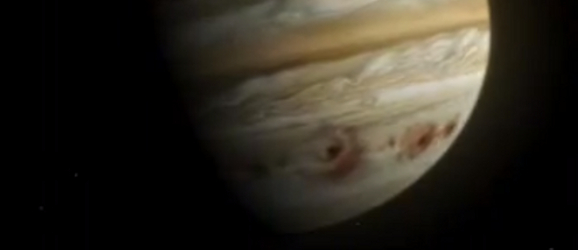What Caused The Flash On Jupiter?
This article is more than 2 years old

Remember the asteroid impact on Jupiter that happened two weeks ago? Well, apparently Jupiter doesn’t. What was once a chance sighting of a comparatively common impact event on the largest planet in our solar system has turned into something of an unsolvable puzzle. It seems while the flash was the perfect indicator for an impact, the lack of the usual follow-up evidence has left astronomers scratching their heads as to what hit the gas giant.
Ever since the impact of the Shoemaker-Levy 9 comet in 1995, astronomers have had a discernible chain of events that they could point to when it comes to large impact events on Jupiter. Once a comet or other large space debris is pulled into Jupiter, first you have the impact (which, given the correct placement of equipment, is visible to astronomers), and then you have the deep black scarring that denotes the impactor’s explosion in the planet’s atmosphere. In an email to Universe Today, SETI astronomer Franck Marchis tells why this tell-tale scar is so important to astronomers.
By performing spectroscopic measurement of the debris field we hope to be capable of determining the nature of the impactor. Without debris field it is virtually impossible since the bolide burned in the upper atmosphere. One day we may be capable of [recording] a spectrum of the meteor itself (during the impact) but right now we don’t have such capabilities.
It was this black scar that astronomers were waiting on to discover the nature of the object that impacted on September, 10th but unfortunately none ever appeared. Even when ground-based infrared telescopes were turned towards Jupiter, they showed no evidence of impact scarring. While most agree that the impactor was just likely too small to leave a scar, others have started questioning if the event was just a trick of lighting from one of Jupiter’s moons, or if Hall and Peterson were just seeing things when they witnessed the event. Given that Hall has video evidence of it that happens around the time Peterson says he witnessed it (there was a discrepancy in the time stamp that the detractors are pouncing on), I think its pretty safe to say that something actually did happen.
As to what hit Jupiter this time, we unfortunately will never know. Without the scarring to analyze there is no way of knowing whether the object was a small asteroid or just a small comet. Fortunately, Franck Marchis estimates that impacts on Jupiter number around 50 a year, so we might see another one soon if we happen to be looking at the right time, something that he thinks could be done with a willing network of professional and amateur astronomers.
I think it is important to organize a network of small telescopes that will monitor continuously Jupiter over a long period of time to be capable of estimating the flux of meteors in the outer part of the solar system, helping us to better estimate the age of icy satellite surface of Jupiter but also Saturn. This is something we could do by combining professional and amateur astronomer efforts.
Sounds like a plan. I’m all for figuring out just how much obliteration Jupiter saves us from on a per-year basis anyway.












